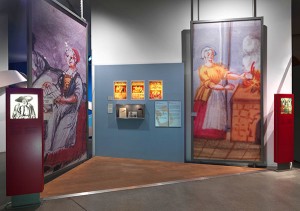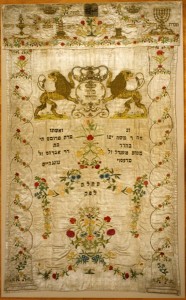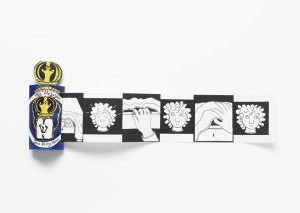Why Lilith Fascinates Our Visitors

View of our permanent exhibition
© Jewish Museum Berlin, photo: Jens Ziehe
One of the tours of the permanent exhibition that I offer regularly is on the subject of women in Judaism. Visitors interested in this topic are usually women’s groups and people already familiar with the essentials of Judaism and Jewish history. I enjoy the lively discussions I have with participants of this tour. When we talk about the life of Glikl of Hameln, Dorothea Schlegel, Albertine Mendelssohn-Bartholdy, and Else Lasker-Schüler, or about Lilith and Eve, we’re also discussing women’s rights – and that means our own rights!
People have heard a wide variety of things about Lilith: “Doesn’t she appear in Goethe’s Faust?” “Lilith is important for fortune telling with cards.” “Adam’s first wife, before Eve.” Some think of Lilith as a threatening ghostly figure, and others named their daughter after her, since she also represents self-determination, independence, unbridled ferocity, and joyous sensuality. Her model of life contrasts with the traditional image of women – in fact, she is Eve’s foil. No wonder that the name Lilith is known above all in feminist circles. → continue reading
On our “Open Day at the Academy,” this Sunday, 27 October 2013, we will celebrate the namesakes of the new public square in front of the Academy on Lindenstrasse: Fromet Mendelssohn, née Gugenheim, and her husband Moses Mendelssohn are now immortalized on Berlin’s cityscape, following much debate and deliberation. Reason enough to find out more about this exceptional couple!

Inspired by deep religious feeling, Fromet and Moses Mendelssohn had Fromet’s wedding dress converted into a Torah curtain. They presented it to Berlin’s Jewish community, where, in the synagogue, it decorated the shrine.
You can find this and other objects relating to Moses Mendelssohn held by the Jewish Museum Berlin in our collections …
In the spring of 1761, when philosopher Moses Mendelssohn met the merchant’s daughter Fromet Gugenheim during a visit to Hamburg, his fate was sealed: he declared his love for her in a garden pavilion, and “stole a few kisses from her lips.” He returned, besotted, to Berlin and wrote to his friend Gotthold Ephraim Lessing:
“I have committed the folly of falling in love in my thirtieth year. The woman I wish to marry has no assets, is neither beautiful nor erudite; yet I am a lovesick beau, so smitten that I believe I could live with her happily ever after.”
The two were wed in June 1762. That they married for love was highly unusual: most marriages at the time were arranged by matchmakers. “[O]ur correspondence can do without ceremony,” Moses assured Fromet on 15 May 1761, in the very first of his letters to his bride: “…our hearts will respond.”
“Before I met you, my love, solitude was my Garden of Eden. But it is intolerable to me now.” Berlin, 24 October 1761 → continue reading
Since the end of August visitors to the permanent exhibition have been able to purchase small artworks from an ‘art vending machine.’ The artworks have been created by Jewish artists living and working in Berlin.

Paper mezuzah with pull-out comic strip by Zara Verity Morris
© Jewish Museum Berlin, photo: Jens Ziehe
Today we present one of the artists: Zara Verity Morris from London. Morris is currently studying for her Masters degree at the “Institute for Art in Context,” at the Berlin University of the Arts. For the art vending machine she has created a comic strip called “The Mezuzah” on a pull-out paper scroll. (A mezuzah is a small case, which is attached to the door posts of Jewish households. Inside is a handwritten parchment scroll with the Hebrew prayer “Shema Yisrael” (“Hear O Israel”).
Christiane Bauer: Zara, can you for starters briefly explain to me why you produced this particular object for the art vending machine?
Zara Verity Morris: I found it an interesting challenge to play with the limited space of the art vending machine, and wanted to make something that could be unfolded once it has been taken out. The long paper roll was inspired by the formal connection between the Torah and a mezuzah.
When I was a young child, I found a few mezuzot in a drawer in varying conditions. A few had open cases. I was surprised to discover a paper scroll lying inside one of them with Hebrew writing on it. I was excited, and thought it was like a toy Torah. As a child, one of my favourite parts of being at a service at synagogue was the heavy Torah being ‘undressed’ by two people; getting its velvet cover and decorations taken off to reveal the plain paper scroll underneath. I decided to turn these childhood memories into a comic.
How does “The Mezuzah” fit into your previous work? → continue reading


